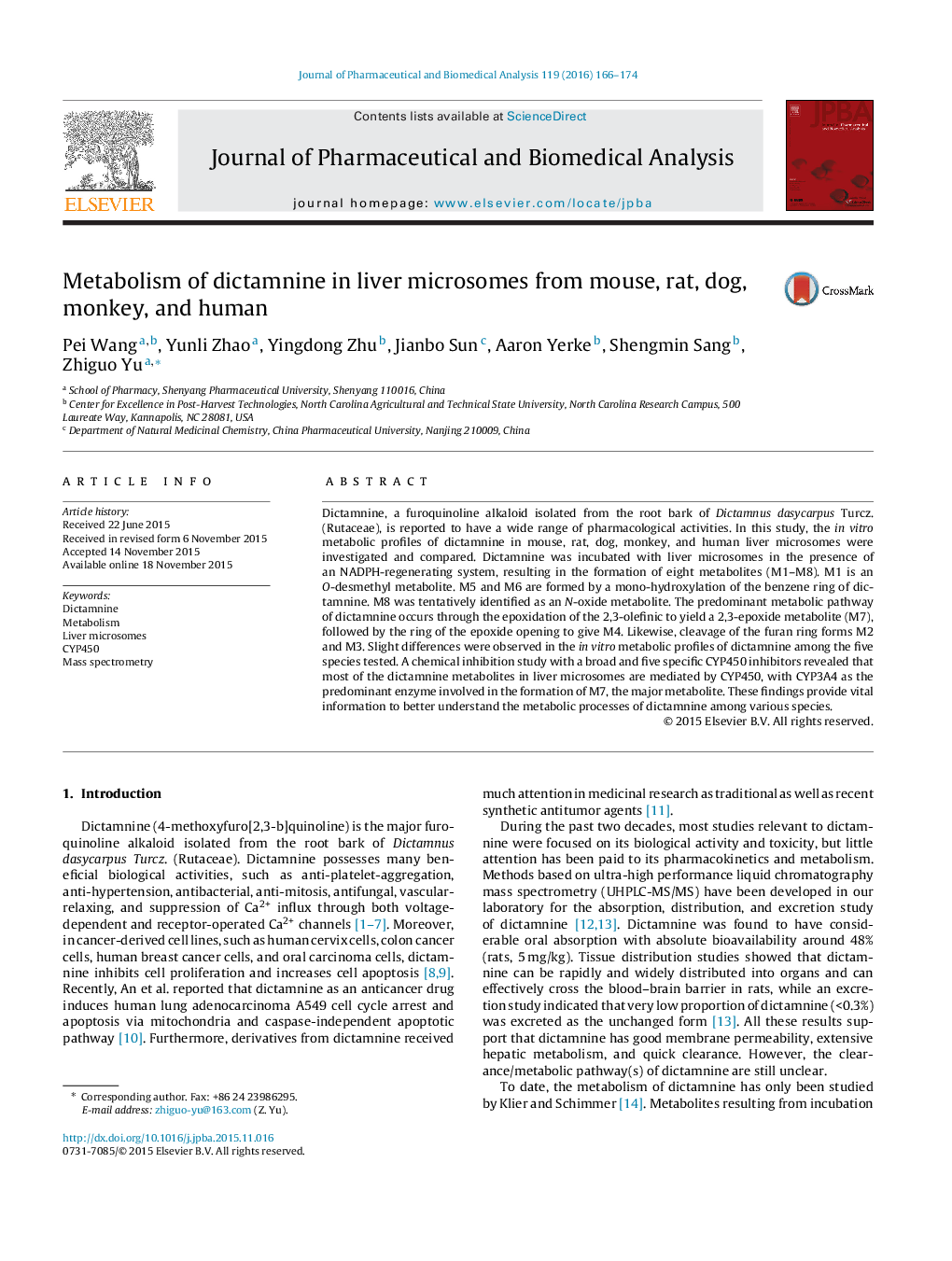| Article ID | Journal | Published Year | Pages | File Type |
|---|---|---|---|---|
| 1221071 | Journal of Pharmaceutical and Biomedical Analysis | 2016 | 9 Pages |
•The in vitro metabolic profiles of dictamnine in mouse, rat, dog, monkey, and human liver microsomes were investigated and compared.•Eight metabolites were identified by HPLC-Q-TOF-MS and UHPLC-LTQ-MSn.•2,3-Epoxide metabolite was identified as the major metabolite of dictamnine.
Dictamnine, a furoquinoline alkaloid isolated from the root bark of Dictamnus dasycarpus Turcz. (Rutaceae), is reported to have a wide range of pharmacological activities. In this study, the in vitro metabolic profiles of dictamnine in mouse, rat, dog, monkey, and human liver microsomes were investigated and compared. Dictamnine was incubated with liver microsomes in the presence of an NADPH-regenerating system, resulting in the formation of eight metabolites (M1–M8). M1 is an O-desmethyl metabolite. M5 and M6 are formed by a mono-hydroxylation of the benzene ring of dictamnine. M8 was tentatively identified as an N-oxide metabolite. The predominant metabolic pathway of dictamnine occurs through the epoxidation of the 2,3-olefinic to yield a 2,3-epoxide metabolite (M7), followed by the ring of the epoxide opening to give M4. Likewise, cleavage of the furan ring forms M2 and M3. Slight differences were observed in the in vitro metabolic profiles of dictamnine among the five species tested. A chemical inhibition study with a broad and five specific CYP450 inhibitors revealed that most of the dictamnine metabolites in liver microsomes are mediated by CYP450, with CYP3A4 as the predominant enzyme involved in the formation of M7, the major metabolite. These findings provide vital information to better understand the metabolic processes of dictamnine among various species.
Graphical abstractFigure optionsDownload full-size imageDownload as PowerPoint slide
